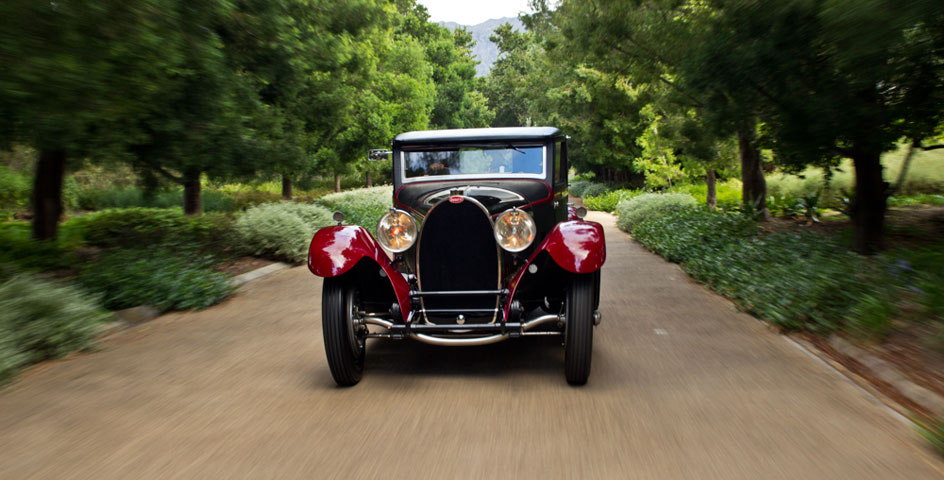1930 Bugatti Type 46

The descriptions of the Classic Cars in the Directory were partly generated or supplemented with the help of artificial intelligence (AI). The content may occasionally not always be entirely accurate or factually correct despite careful checking.
The Bugatti Type 46, produced between 1929 and 1936, was a luxury car that featured an impressive list of technical advancements that were ahead of its time. This car was equipped with a powerful 5.3-liter straight-eight engine that produced 140 horsepower, resulting in a top speed of 93 mph. It was also the first Bugatti car to feature hydraulic brakes, a welcome upgrade from the less effective mechanical brakes of the previous models.
The engine of the Bugatti Type 46 had a unique design, with a bore and stroke of 80 mm x 130 mm, which allowed the engine to run smooth and efficiently. The straight-eight engine included a bronze-cased roller-bearing for the camshaft and a roller bearing for the crankshaft, which were advanced features that were uncommon for the time.
One of the most significant technical features of the Bugatti Type 46 was its suspension system. The car employed a sophisticated independent front suspension with semi-elliptical leaf springs, hydraulic dampers, and hydraulic shock absorbers. The rear suspension was also independent with reversed quarter-elliptical leaf springs, shock absorbers, and a live rear axle. The chassis was constructed with an advanced tubular steel frame and integrated hydraulic dampers, which worked in unison with the suspension system to provide a smoother ride.
One of the less visible, but still an impressive technical innovation that was present in the Bugatti Type 46, was its gearbox. This vehicle had a four-speed manual gearbox that featured a unique mechanism and design that was developed by Ettore Bugatti himself. This new type of gearbox had the capability of changing gears while the vehicle was in motion, a feature that was not available in other cars of that time.
The Bugatti Type 46 had a unique design that included a long hood and pointed rear, which was a trademark of the Bugatti brand. The exterior of the car was also fitted with Art Deco-inspired details like chrome trimwork, round headlights, and an elegant interior that was finished in top-notch materials.
The Bugatti Type 46 was a high-end luxury car that featured advanced technical details for its time. Its powerful engine, advanced suspension system, unique gearbox, and elegant design made it a significant achievement in automotive engineering. Even today, this car is a classic and highly prized among collectors and enthusiasts for its advanced technological features and sophisticated design.
Milestones
- introduced in 1929 as a successor to the Type 40 and Type 43 models - powered by a 5.4-liter straight-eight engine producing 140 horsepower - featured a four-speed manual transmission and hydraulic drum brakes on all four wheels - available in various body styles, including sedan, coupe, and cabriolet - designed by Jean Bugatti, son of founder Ettore Bugatti, with art deco-inspired styling - equipped with advanced features for its time, such as a central lubrication system and electric fuel pump - regarded as a luxury car with a high price tag, appealing to wealthy buyers - produced until 1936, with approximately 450 units sold during its production run - notable owners included royalty, celebrities, and politicians, such as Prince Pierre of Monaco and French president Paul Doumer.Technical
• Manufacturer: Bugatti • Production Years: 1929-1936 • Engine: 5.4 L straight-8 • Power output: 140-160 hp • Transmission: 4-speed manual • Top speed: 90-100 mph • Body style: Coupe or sedan • Wheelbase: 3,400 mm (133.9 in) • Length: 4,800 mm (189 in) • Width: 1,770 mm (69.7 in) • Height: 1,600 mm (63 in) • Weight: 2,225 kg (4,905 lb) • Brakes: Four-wheel drum brakes • Suspension: Front: solid axle with semi-elliptical leaf springs, rear: live axle with quarter-elliptic leaf springs • Fuel system: Twin Zenith carburetors • Ignition system: Magneto ignition • Steering: Worm and sector • Body material: Steel-framed with aluminum coachwork